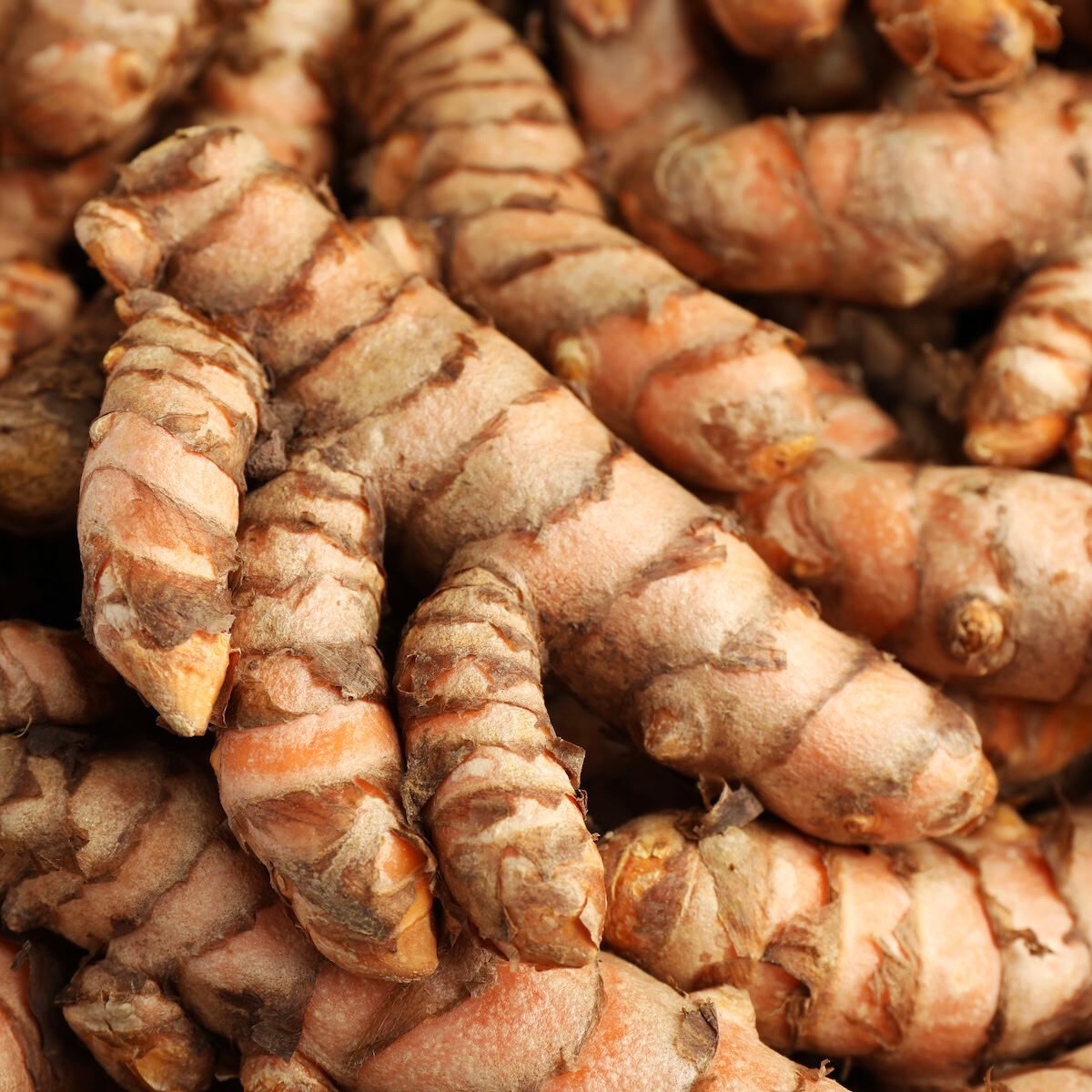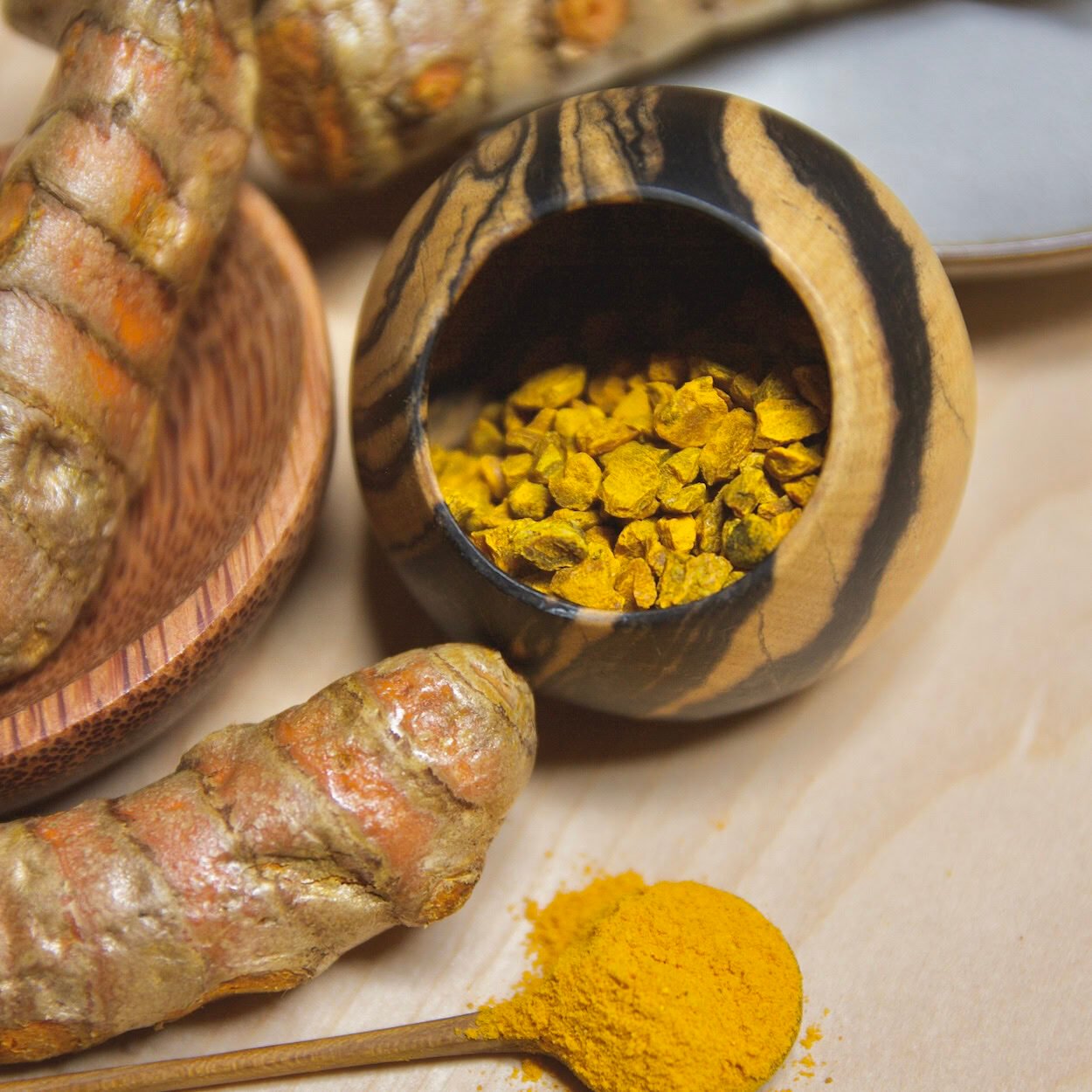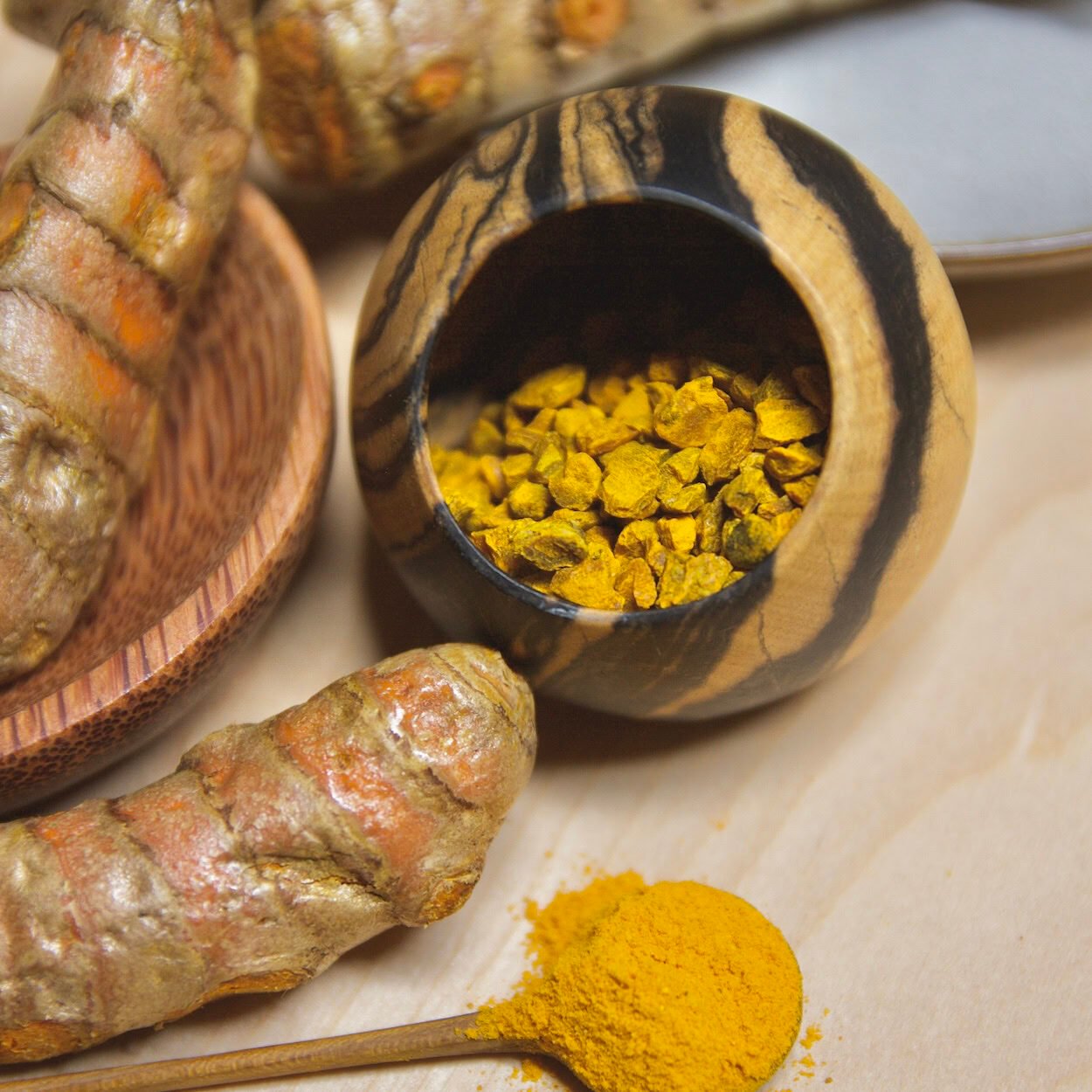Turmeric
Turmeric is the spice produced from the rhizomes of Curcuma longa, a tropical perennial herb in the ginger family.

REGION OF ORIGIN
The Indian subcontinent and Southeast Asia. Turmeric's exact wild ancestor remains unconfirmed, but Curcuma longa is believed to have evolved through human selection from species within the Curcuma genus native to South and Southeast Asia. This region is characterized by warm temperatures with high humidity and rich, loamy soils—the perfect environment for turmeric to flourish.
PART & COLOR
The outside of turmeric rhizomes is brownish and slightly rough with orange hues peeking through. Inside, the flesh ranges from bright yellow to deep orange, depending on the variety and maturity. When dried and ground, turmeric becomes the famously vivid golden yellow-orange powder used all around the world. The vibrant green leaves are also commonly used in cooking—see their culinary uses below.
HARVEST
From planting to harvest, turmeric needs 8-10 months of frost-free growth. The harvest season varies by region, but typically arrives in the late fall or early winter. Learn more about the production of turmeric.

FLAVOR & AROMA PROFILE
While prized for its vibrant color, turmeric's aroma and flavor are equally distinctive. The aroma has a musky, mustard-like base accented by fresh citrus and ginger notes and a hint of warm spice.
The taste is earthy and warm, with a distinct bitterness and mild peppery bite. A subtle sweetness lingers underneath, becoming more pronounced and complex when cooked, often developing a noticeable floral quality. Fresh turmeric rhizomes provide a distinctly brighter and more vibrant flavor profile compared to the dried powder—more intensely earthy and peppery. Fresh turmeric is intensely earthy and peppery, with sharp citrus-like notes that offer a refreshing zing. In contrast, dried turmeric has a deeper, more concentrated flavor with more prominent bittersweet, musky, and warm spice tones.
CULINARY USES
Turmeric has a bold and powerful flavor that can quickly overwhelm a dish, so it’s often best to combine it with complimentary spices to achieve balance. Its integral to South Asian, Southeast Asian, and Middle Eastern cooking, valued for imparting not only its rich flavor but also its vibrant color to a dish. A central element to many curries and mustards, turmeric is mostly used in savory dishes, but can also serve certain sweet creations equally well, like the Lebanese cake sfouf, where its unique flavor pairs beautifully with warm spices like cinnamon and cardamom.
Turmeric leaves can be dried and ground to use as a seasoning or rub, or they can also be added whole to broths, curries, or stews, and then removed prior to serving like bay leaves. It's also popular to wrap them around fish for added flavor during roasting or grilling, similar to banana leaves.



